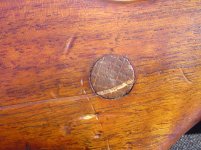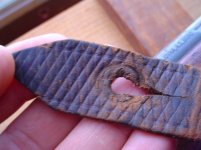Here you go:
http://en.wikipedia.org/wiki/Rust
George, if you've ever removed rust from a blued finish only to see white metal under it you've seen "bluing removed by water without hurting the steel". As you know, bluing is little more than controlled chemical oxidation of steel, actually the iron content in steel. Finish removal by moisture (i.e., rust) has been experienced by anyone who has ever removed rust from a blued, parkerized, or phosphate finish from a firearm. If the rust (oxidation) has been present and in an environmental condition where it oxidizes further than finish removal one gets "pitting" (damage to the steel). If anyone doesn't believe me they can take a blued firearm, put it outside on the porch, get a moist/wet wash rag and place it on the blued finish. Make sure the rag stays moist, which it likely will if not in sunlight. In a couple days come look at your blued finish. Knock that rust off of there and what do you see? White metal. If you want the steel to pit, just leave it like that longer. If you really want to see an example of this, but a blued rifle in a cloth gun case. Dunk it in the water and then simply put the rifle in the wet case in your closet. Come look at it in about three days. Once the rust is removed you won't have finish left and the steel won't be pitted.
When oxidation is controlled (bluing) or stops due to a change in the environment which stops the rusting, one can get various levels of oxidation, from surface rust which can be removed from the surface of the blued finish, to rust which gets through the blued finish and results in removal of the blue finish with the rust, to rust which gets into the base steel and causes pitting. All this is dependent upon the environment and how long the moisture stays on the firearm before that condition is removed.

















